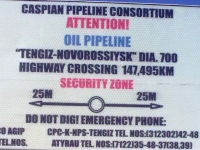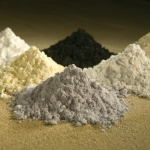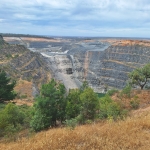Pipeline Leaks in Caspian Sea Oil Project To Cost $4 Billion

Kashagan, Kazakhstan's flagship offshore oil project in the Caspian Sea, will need to spend some $4 billion to repair 200 kilometres of pipelines that are leaking corrosive sulphur-containing gas, according to new estimates. The reports confirm long standing fears of environmental organizations and the local community.
The project is a joint venture between China National Petroleum Corporation, ConocoPhillips and ExxonMobil from the U.S, Eni of Italy, Inpex of Japan, KazMunaiGas of Kazakhstan, Royal Dutch Shell from the Netherlands/UK and Total of France. Originally estimated to be a $10 billion project that would started to produce oil in 2003, Kashagan fell ten years behind schedule and has cost over $50 billion to date.
Extreme weather conditions of 45 degrees Celsius in summer and minus 40 Celsius in winter posed major challenges to drilling for oil in the Caspian Sea from the very beginning. In order to overcome these challenges the companies built an artificial island 50 miles from shore by dumping four milllion tons of rock into the sea and enclosing it with artificial reefs to protect it against the elements.
The effort was not easy. "We've had experience with hydrogen sulfide, low temperatures and high pressure -- but never all together," Paolo Campelli, Eni's head of operations in Kazakhstan, told the Wall Street Journal in 2007.
At the time, Manana Kochaldze, founder of Green Alternative, a Georgian environmental watchdog group, warned the public of the dangers of the projects, especially on the beluga sturgeon which migrates through the oil field waters to spawn. "Sulphur and mercaptan emissions from oily water processing and treatment of wastes transported here from Kashagan offshore facility may severely impact the thousands of people living in the area," she said in a Friends of the Earth International press release at the time.
"The beluga is renowned around the world for its roe - the most expensive caviar on the planet," Galina Chemova, director of Center Globus, a Kazakh environmental organization, recently told Mo magazine in the Netherlands. "The exploitation of the Kashagan oil field will place additional stress on the endangered population of this species."
"Unfortunately, oil leaks are not rare in Kazakhstan," a consultant named Abdulla Amin told the magazine. "Around 600,000 hectares of land in the Kazakhstani part of the Caspian Sea region is covered by a thick layer of oil, which is polluting soil and ground water. Should there be an oil disaster in the Caspian Sea, the existence of this fragile ecosystem will face a serious threat, especially because Kazakhstan has not decided yet on a plan to deal with oil leaks."
One month after oil production began in September 2013, leaks were discovered and the project was shut down. The Kakazh government estimated that 2.8 million cubic metres of toxic "sour gas" had been flared off causing the local air and water to turn acidic.
Kashagan may not restart for a while. "Even if the pipeline installation is complete in summer-autumn 2016, they still have to test it before the winter season sets in," Dominic Lewenz, head of research at Visor Capital, a Kazakhstan-focused brokerage, told the Financial Times. "Production restart in 2016 looks like quite a stretch - 2017 or even a little later seems more likely."
Some say that the sour gas is just one of the serious dangers of extracting oil in Kashagan which is drilling for oil from some 4,000 metres under the sea bed. "Releasing oil at 1,000 atmosphere pressure is like releasing a genie in a bottle. Who knows what will happen?" professor Muftakh Diarov, a member of the Kazakh National Academy of Sciences told the Guardian in 2002. "If there is another earthquake, the new pressures created in the oilfield could trigger a man-made earthquake. Oil would spill out into the sea and cause an environmental catastrophe."
- 183 Environment



